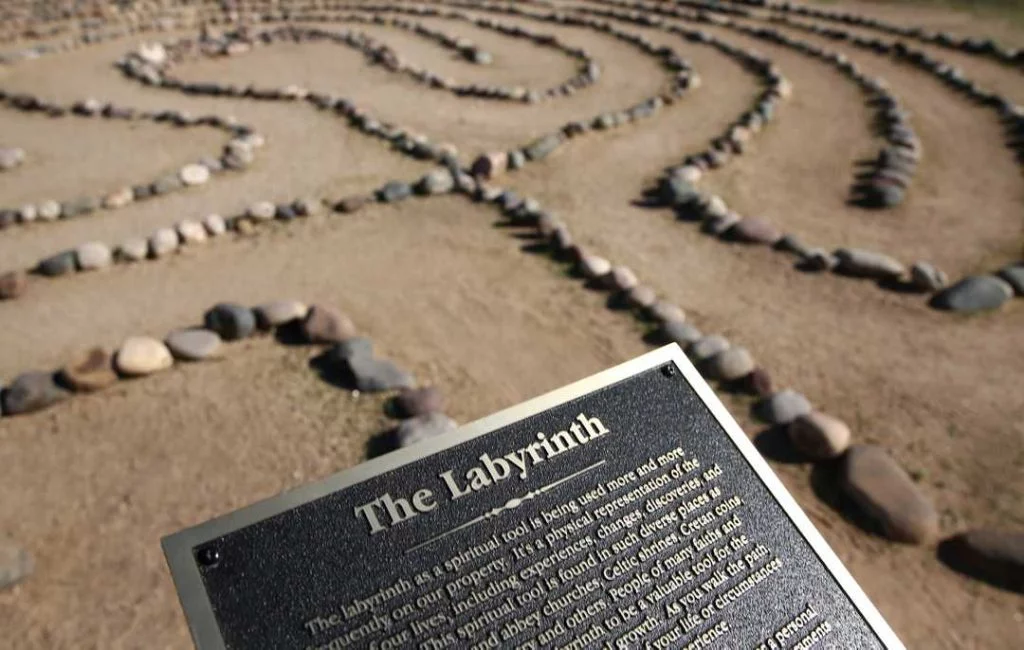Featured December 17, 2018
Short Link:Labyrinths can help you stay centered in a stressful world
People are continually engaged with smartphones and other devices that tether them to all the stresses and dramas of the world. But a little peace may be just a few steps away.
Ariana News Agency- Relief can come in the form of a labyrinth. Throughout Arizona, in locations public and private, out in the open or tucked away, there are labyrinths where those who choose to walk the winding paths can clear their minds, let go of stress and find a little tranquility even in the bustle of the city.
There are more than 100 labyrinths in Arizona, according to the World-wide Labyrinth Locator website.
Mary Ann Walsh of Scottsdale walks the labyrinth at the Franciscan Renewal Center to find some peace and quiet. It’s located toward the rear of the Scottsdale campus with views of the nearby mountains.
“Do you feel like you’re on Lincoln Drive back here?” Walsh said. “Not at all. It’s like being transported to a different place. It’s so peaceful here.”
Walsh said she walks the labyrinth for a variety of reasons.
“Sometimes I’ll go in with an intention,” she said. “Maybe a question that I need an answer to. Maybe a problem to solve.”
A labyrinth history lesson
Labyrinths have been around for more than 4,000 years, according to the Labyrinth Society. They have been used as symbols, a space for walking meditation, dance and other rituals. They have been a part of societies throughout the world including Native American cultures, ancient Greece and in Christianity.
Labyrinths have appeared in so many cultures dating back thousands of years that it’s difficult to pinpoint their origins.
Patricia Lee, a spokeswoman for the Franciscan Renewal Center, said labyrinths were used as a substitute for visiting religious sites.
“Historically, people who couldn’t travel to religious sites used labyrinths as sort of a walking pilgrimage,” Lee said. “Today, people of all faiths and no faith come here to walk the labyrinth to find peace from everyday stressors. Some use it as a form of contemplative prayer. It’s an invitation to slow your pace, quiet your thoughts and center yourself.”
The labyrinth at the Franciscan Renewal Center is about 40 years old and is complemented by other meditative spaces on the grounds, including a desert walk and a meditation chapel.
Difference between a labyrinth and a maze
Though the word labyrinth was used in Greek mythology to describe a confusing maze that contained a monster, the Minotaur, labyrinths are not used to confound people today.
Labyrinths are not mazes. There can be varying complexity to the number of circuits you can walk while in one, but there is just one path to be taken. It’s not a puzzle to be solved.
The path will lead you to the center and out again. There are no dead ends.
You can walk a labyrinth to meditate, pray, focus your thoughts or empty your mind.
“I think it is whatever you bring to it,” Walsh said.
Labyrinth etiquette: Don’t ruin the vibe
Bring your best self when you enter a labyrinth. In other words, be respectful of the space and other people in it.
Let people pass if they happen to be walking faster than you. If you need to pass someone, do so quietly. There are no hard-and-fast rules such as always passing on the left.
If you want to be in the labyrinth alone, just wait for the other users to leave. Use the time as an opportunity to focus your intention.
“We don’t have road rage in a labyrinth,” Lee said. “You’re there to find peace and tranquility. So if the person in front of you stops, you stop. Or you can wait until everyone else is done if you just want to do it yourself.
“Several people can be in the labyrinth at once, but it’s always respectful.”

